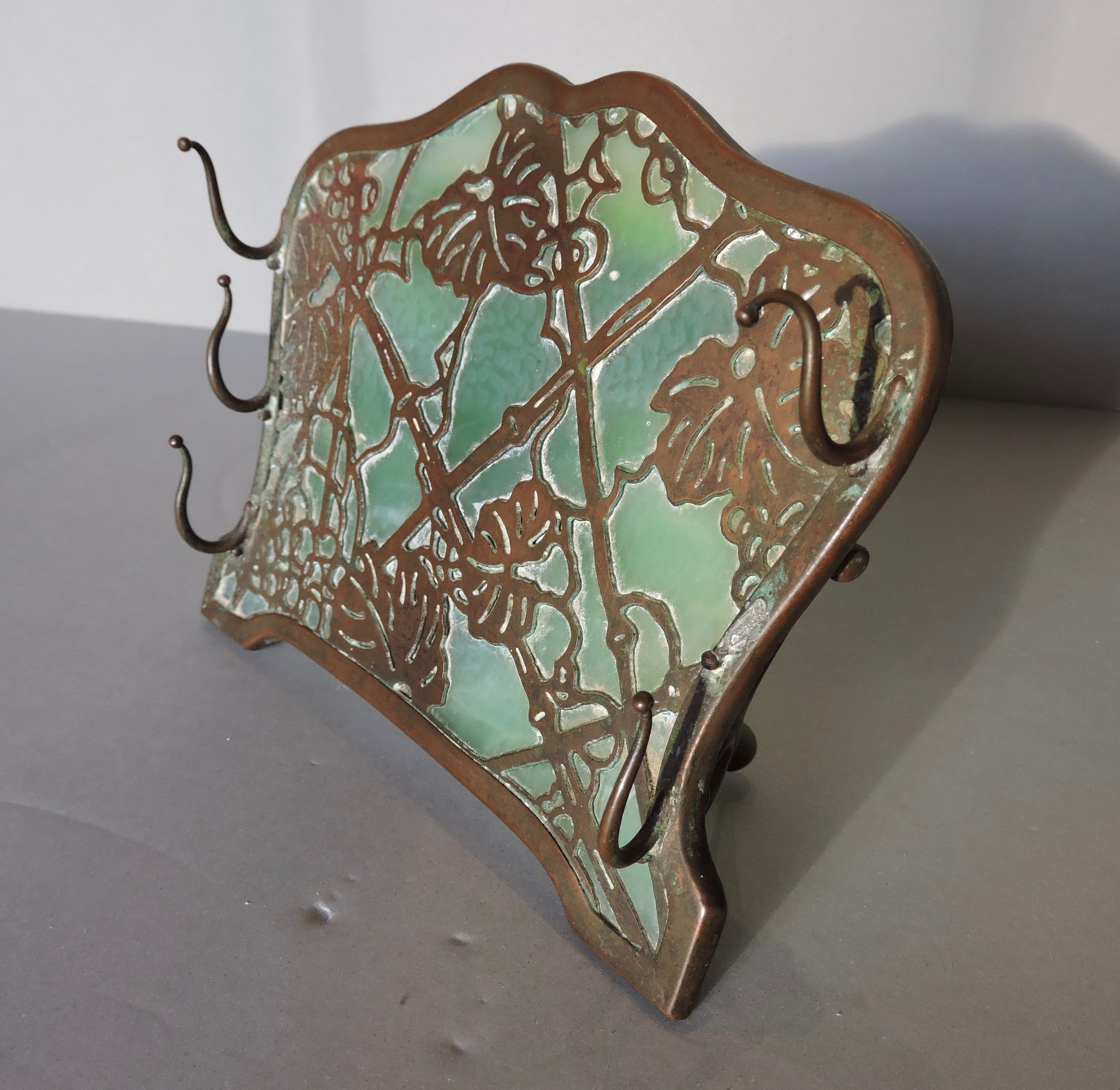Tiffany & Co. is a name that needs no introduction. Whether referring to Tiffany dragonfly lamps, immaculate enamel work, or contemporary jewelry in a little blue box, a sense of opulence and wonder is instantly conjured up. Thanks to television and film (think Breakfast at Tiffany’sand Antiques Roadshow) Tiffany & Co. holds a prominent place in our modern imagination and American popular culture at large.
Early Tiffany & Co. works all have elements befitting the then-popular Art Nouveau style. These included natural motifs such as dragonflies, butterflies, verdant landscapes, and a wide array of blossoms and plants; the signature whiplash curving lines; and a distinctly Asian influence from a fellow movement known as Japonisme.
When we are viewing an early piece by Tiffany, being so familiar with his work, we may tend to take the design choices for granted. But in actuality, at the time of their creation, they were highly creative and fresh. In the mid 1880s, shifting from interior design to artistry Louis Comfort Tiffany (son of the founder Charles Lewis Tiffany) endeavoured to make innovative glassworks that still focused on tradition and craftsmanship. In 1900, the World’s Fair in Paris, or Paris Exposition Universelle, brought Art Nouveau designers and artists to the forefront. Soon after, Tiffany earned multiple commissions and he began expanding to enamel, ceramics, assorted decorative objects, and jewelry. By 1902, he became the first design director of his family's company. Though his works were handcrafted, Tiffany was also focused on the skillful mass production of goods, especially his lamps.
Historically, when a prolific designer or artist gains great acclaim, we often neglect to discuss the other individuals who contributed to and executed the works for which they are famous. In recent years, more research has been conducted that focuses on the the employees of Tiffany’s studios. As it turns out, several of the designers employed were women. Though uncommon for women to work outside of the home at this time, by 1897, Tiffany had employed over 40 women in his glass workshop. In the early 2000s, letters belonging to an employee named Clara Driscollwere discovered. They shed light on the way departments and roles were arranged by gender within the company. Driscoll had a supervisory and creative design role in the Women’s Glass Cutting Department and is now credited with designing some of the more famous Tiffany works. Though Driscoll was only one of many women who worked for Tiffany & Co., less is known about her contemporaries.
____________
We currently have a charming Tiffany & Co. grape vine desk set designed available in our online store. If you would like to learn more about these pieces, please contact us at ken@kenfarmerllc.com or call 540.731.1604.







